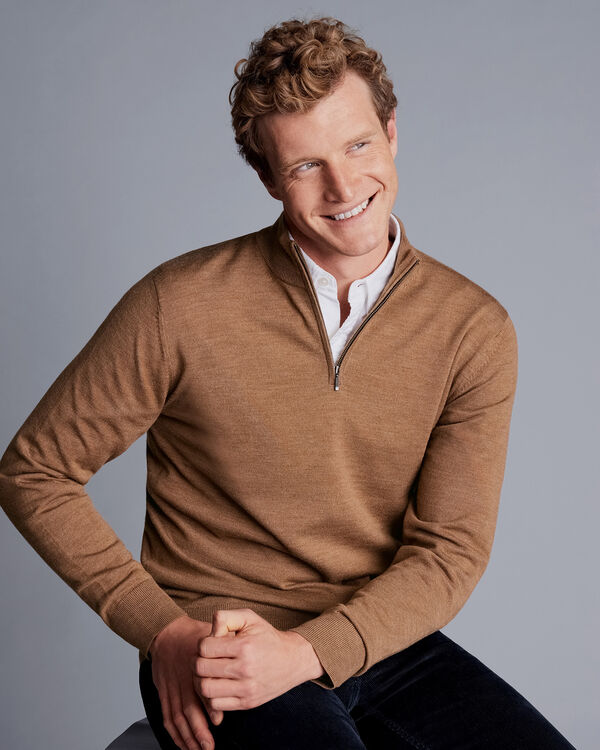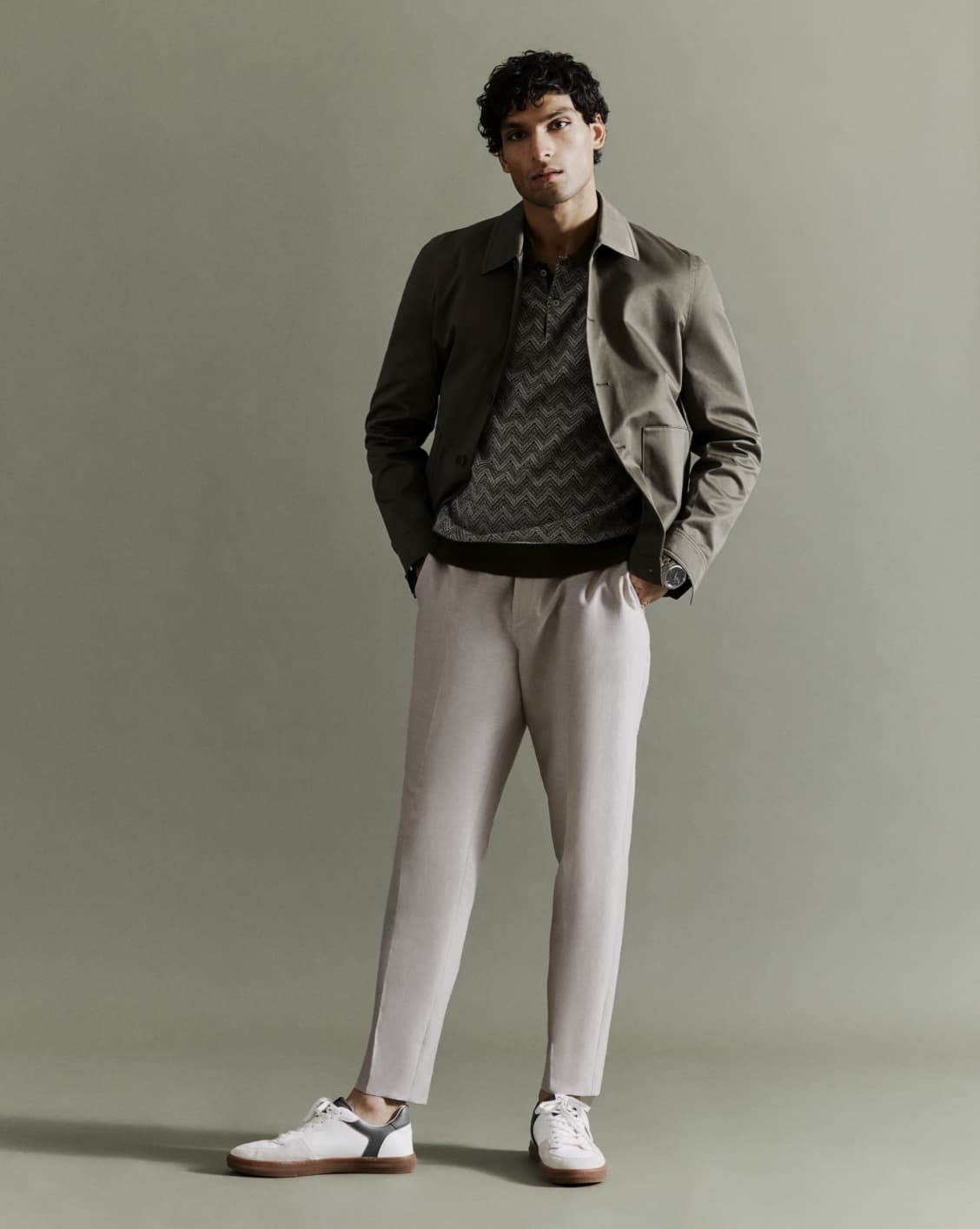Business Casual for Men - Explained

Forget everything you thought you knew about workplace dress codes and start over. Business casual is here to change the rules, and we are happy to guide you on your way to the perfect business casual outfit. 75 years ago, the standard business attire included a coat, tie, and hat, now you can wear chino pants to work, and everyone is absolutely fine with it. However, the question is when does business casual become too casual? What is the line you shouldn't cross if you want to be fashionable at the office while exuding professionalism? Is there such a thing as too "formal" in modern offices that have adopted the business casual office style?
What does business casual for men really mean?
Business casual office wear isn't as formal as the classic business suit, but it still renders a business-like impression. We know, this may sound a bit too complicated because it leaves a lot of room for interpretation. Add to this the new concept of "smart casual," and we've got ourselves a fashion dilemma for many businessmen who want to dress professionally while respecting the unspoken fashion rules of modern offices.
The business casual style is a more relaxed approach to the standard business style and encourages creative freedom. However, don't let yourself be fooled by the "casual" side of it. Business casual still means no shorts, no Hawaiian shirts, no sandals, and, preferably, no jeans unless they are really nice dark jeans.
You'll probably notice that business casual is more about what you shouldn't wear in office environments than what to wear. And that's because we want to insist on the fact that business casual is more "business" than it is "casual," which translates into a certain level of style, sophistication, and professionalism.
What should you be wearing in a business casual workplace?
The good news is business professionals are no longer required to wear Oxford shirts, stuffy suit jackets, and ties. The bad news is they need to learn to make the difference between being too formal and overly casual. To make things simple, we've made a list of what your casual business attire should include:
Outerwear: blazers and sports jackets
Your outerwear is an integral part of your business casual wear. While it isn't always necessary, if you decide to include it in your casual business attire, you need to make sure it is well-cut and tailored. We would recommend the classic single-breast blazer in a neutral color like navy that will inspire professionalism while flattering your figure.

Shirts: button-down shirts and collared shirts
You will never go wrong with a long-sleeved button-down shirt as long as you wear classic colors like white, black, or grey. Since the tie has been removed, prints are acceptable in a business casual office environment as long as you keep them discreet - stripes, checks, jacquards will do just fine. Make sure the shirt clings tightly to your shoulders and has two straight seams in the back. If you feel more confident and are already familiar with the office environment, you can experiment with bright colors, but within the confines of professionalism.
Sweaters and cardigans
If you choose to replace your blazer with a sweater, we would recommend opting for tight-fitted items that resonate better with business casual environments. Chunky knit sweaters are acceptable in the colder months; otherwise, it is best to go with fine-knit sweaters accompanied by the classic button-down shirt with the collar visible for that extra touch of business style. The button-down cardigan looks best in solid colors like navy or gray and goes perfectly with a collared shirt. This time, we would also suggest a tie.

Trousers, slacks, chinos
The options are endless now that suit pants are no longer mandatory, but dress pants and khaki pants are the most popular choice for basic business casual attire. Khakis go well with both formal and casual shirts and contribute to a comfortable outfit. Bright colors are not exactly an option for the business casual dress code, but you can have a little fun and choose grey, tan, or even beige for your pants. While your coat doesn't need to match the pants, your belt should have a similar color. Business casual pants need to be tight-fitting, but please don't confuse tight-fitting with leggings. Keep them slim! If you insist on wearing jeans, always opt for high-quality dark wash jeans or black jeans and leave your casual denim jeans at home.
Footwear: shoes, boots, loafers
Business casual shoes are diverse but have two things in common: quality and style. If you want to play it safe, match your business casual outfit with a pair of loafers, Oxfords, or monk straps. Leather dress shoes are always a good idea if you choose appropriate colors. Our favorites are chocolate, dark red, or tan, but you can keep it classy with sharp brown or black. We would also like to make a case for brogues and wingtips. Although dressy, they are less formal and always a great idea for your business casual outfit. If your workplace allows fashion experiments, you can try a pair of suede ankle boots or even leather sneakers, but only if they have the refinement of a dress shoe.

What should you avoid wearing in a business casual workplace?
The list is long but intuitive. The key is to learn when a piece of clothing is simply too casual for the business casual environment. In this case, you can think that the more a piece of clothing is or has, the more casual it will be. For example, if it is more colorful or more trendy, you can undoubtedly label it as too casual. The same applies to details. The more details it has, the more casual it becomes. Take a look at what you shouldn't wear when you work in a business casual environment or attend business meetings, and you'll find it easier to come up with business casual outfit ideas.
Conservative outfits: Suits and overly elegant suit jackets should be reserved for business professional environments or a 60s-themed party.
Polo shirts and t-shirts: A long-sleeve polo shirt may be at the line between acceptable business casual style and too casual, but t-shirts will never stand a chance in a business casual environment.
Casual pants: Whether we are talking about casual jeans, street style jeans, cargo pants, or even worse, athletic wear, all are strictly forbidden if you are going for a professional look and the admiration of your coworkers.
Baggy clothes: Baggy sweaters and pants may be currently trending, but they are not to be included in your business casual attire. Not now, not ever!
Bright colors, loud patterns, slogans: Unless you are a master at mixing and matching items from your business casual wardrobe, stay away from bright colors and loud patterns that may turn all eyes on you and cancel all your efforts to fit into a business casual workplace.

We hope we've helped you solve the mystery of business casual, and now you know how to get ready for work if your office has a business casual dress code. If not, we are always happy to help out and recommend pieces of clothing that match your style and professional environment. Remember! You can't go wrong with a pair of cotton pants, preferably chinos, a collared shirt, a tight-fit blazer, and a pair of leather sneakers or Oxfords. For an extra smart touch, you can opt for one of the new skinny ties that have taken over the world of business casual, preferably made from wool or cotton.
And when you're ready to call in the experts...
Ready for a closet that brings you confidence and simplifies getting dressed each day? Our stylists can help you curate a wardrobe personalized to your lifestyle, professional dress code, and preferences!
Check out our services to learn more about working with us, or schedule an intro call to get started today.

